Read next
The latest news, updates and expert views for ambitious, high-achieving and purpose-driven homeowners and property entrepreneurs.

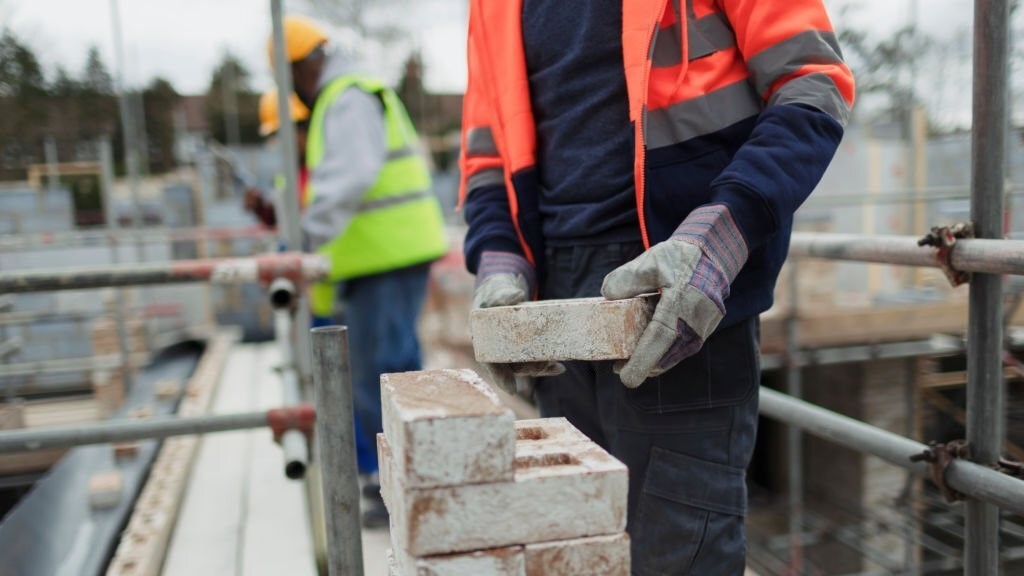
The UK's expensive housing paradox is characterised by astronomical costs coupled with subpar craftsmanship, leaving many questioning why high construction costs aren't translating into better-quality homes.
This troubling trend of delivering low-quality houses at unprecedented prices has become a defining feature of the UK's housing market of late, sparking concerns among experts and consumers alike.
In this in-depth analysis, we will explore why new build homes are so expensive in the UK. We’ll examine the key factors driving high prices within the UK’s construction industry, alongside the reasons why many of these new homes fail to meet quality expectations.
Housebuilding in the UK is a cornerstone of the nation's economy, with a social and economic footprint that extends far beyond the construction sites.
According to statistics published by the House Builders Federation, housebuilders constructed 240,000 new homes last year, setting in motion a chain of economic activity through various sectors. This construction activity generated an impressive £53.3 billion in economic output and supported nearly 834,000 jobs, underlining the industry's role as a major economic driver.
Despite these impressive statistics, the UK's construction industry has found itself grappling with the reality that building homes is now more expensive than ever before. This surge in costs has far-reaching implications, affecting not only developers and contractors but also aspiring homeowners and the broader economy. The cost to build a house has skyrocketed, outpacing inflation and wage growth, making homeownership increasingly unattainable for many.
As mentioned in our introduction, despite these escalating costs, the quality of new homes has often fallen short of expectations, creating a troubling scenario where buyers are paying more for less. This discrepancy between the industry's economic contribution and the premium costs of new build homes raises questions about where resources are being allocated and whether current practices are truly serving the best interests of homeowners and communities.
At Urbanist Architecture, our decades of experience providing architectural services in the UK market has allowed us to witness first-hand the evolution of these challenges and their profound impact on our built environment.
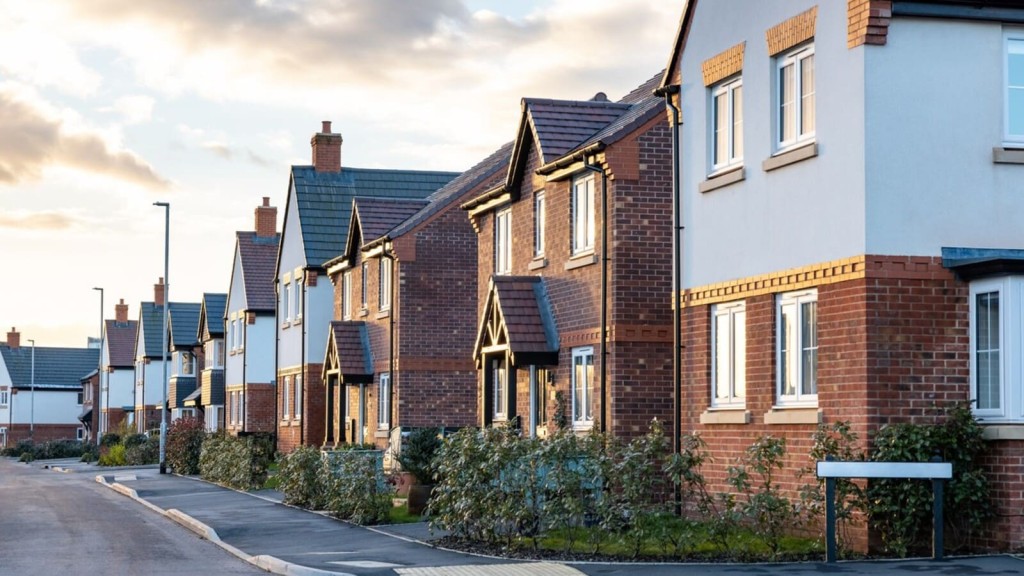
There’s more than one reason behind the high costs and declining quality in UK housebuilding. In fact, in our opinion, there are 12 clear reasons:
1. Rising material costs
2. Lack of skilled construction workers
3. High land costs in desirable areas
4. Restrictive planning processes
5. Use of cheaper, lower-quality materials
6. Outdated construction methods
7. Poor quality control and inspections
8. Limited competition among developers
9. Developers prioritising profit over quality
10. Seller’s market due to high demand
11. Rushing construction to meet housing targets
12. Inadequate consumer protections
Now you know the topline, let’s dive deeper and unpack each factor in more detail so we can uncover why building in this country has never been more expensive, why quality often takes a hit despite rising prices, and most importantly, what we can do to reverse this trend and build a better future.
Here we go...
The construction sector in the UK has been grappling with an unprecedented surge in material costs, a challenge that has sent ripples through the entire industry. The perfect storm of supply chain disruptions, rampant inflation, and geopolitical turmoil—most notably the war in Ukraine—has created a volatile market for essential building materials.
Take steel, for instance. This versatile material, crucial for reinforcing concrete and creating structural frameworks, has seen its price fluctuate wildly. Similarly, timber, a staple in British construction due to its sustainability and adaptability, has become increasingly costly. Cement, the very foundation of modern building, hasn't escaped this trend either.
What's exacerbating this issue is the complex web of international trade. Tariffs, initially designed to protect domestic industries, are now contributing to the problem by inflating prices further. Moreover, shortages of key materials are becoming commonplace, forcing architects and builders to make difficult decisions about design and construction methods.
The knock-on effects are profound. Housebuilders, faced with spiralling costs, are often compelled to economise in other areas. Regrettably, this frequently translates to compromises in quality and it's disappointing to see designs altered and specifications downgraded to accommodate these financial pressures.
Furthermore, the volatility in energy prices is adding another layer of complexity. The cost of manufacturing and transporting materials is intrinsically linked to energy costs. As these costs rise, so too does the overall expense of construction. This creates a vicious cycle where increased costs lead to further compromises in quality.
The ramifications extend beyond mere aesthetics or comfort. Delayed projects, a common consequence of material shortages and cost overruns, contribute to the overall inefficiency of housebuilding in the UK. This inefficiency, in turn, exacerbates the housing crisis by slowing the rate at which new homes become available.
We believe that addressing this issue requires a multifaceted approach. We need to explore alternative materials, invest in domestic production capabilities, and perhaps most importantly, re-evaluate our approach to sustainable architecture. By focusing on longevity and adaptability in building design, we can mitigate some of the impacts of these material cost fluctuations.
The dearth of skilled labour in the UK construction industry is a crisis that has been brewing for years, but has reached a critical point in the wake of Brexit as an exodus of European workers has left a gaping hole in our workforce.
Bricklayers, carpenters, and electricians—the very backbone of the construction industry—are in particularly short supply. This shortage isn't merely a numbers game; it represents a significant loss of expertise and craftsmanship that had become integral to the British construction landscape.
What's particularly concerning is the industry's struggle to attract younger talent. The perception of construction as a less desirable career path compared to other sectors has led to a generational gap in skills. While apprenticeship schemes exist, they often fall short of meeting the industry's demands, both in terms of quantity and quality of training.
The consequences of this skills shortage are far-reaching and contractors are having to rely on workers who might not have all the experience they need. It's a bit like asking someone who's just learned to cook to whip up a gourmet meal - mistakes are bound to happen. From an architectural practice’s point of view, it's really frustrating to see brilliant designs fall flat because the people building them just don't have the right skills.
This issue is also not just about the here and now; this shortage is holding us back from embracing new ways of building. Without a workforce skilled in cutting-edge methods such as offsite construction or advanced digital technologies, the industry remains tethered to traditional—and often less efficient—building practices.
So, what's the fix? Well, it's not simple, but we definitely need to invest in training. We need to show young people that construction isn't just about hard hats and mud - it's high-tech, innovative stuff. And once we've got them interested, we need to make sure they can see a real future in the industry.
As for those of us already in the industry, we need to think smarter about how we design and build. If we can work more closely together - designers and builders - we can help bridge this skills gap. And by pushing for more digital tools and modern building methods, we can nudge the whole industry into a more skilled, efficient direction.
Addressing this skills shortage is not just about maintaining quality; it's about future proofing the entire construction industry. Only by nurturing a skilled, adaptable workforce can we hope to meet the challenges of building the sustainable, high-quality homes that Britain desperately needs. It's a big challenge, but it's one we've got to tackle head-on.
Let's talk about the elephant in the room: land prices. They've gone through the roof, especially in hotspots like London, and it's changing the game for everyone involved in building homes.
This isn't a new problem - it's been simmering for decades, slowly but surely reshaping what our cities and towns look like. And the reason? It's as simple as supply and demand. In places where everyone wants to live, there's only so much land to go around.
Now, put yourself in a developer's shoes for a minute. When you're spending a fortune just to get your hands on a patch of land, something's got to give. More often than not, it's the quality of what's being built. There's simply less money left in the pot for top-notch materials or innovative construction techniques, and the extensive value engineering to accommodate inflated land costs has been a source of considerable frustration within the architectural community for years now.
Moreover, the practice of land banking—where developers sit on land without building—further inflates prices and contributes to the housing crisis. This speculative behaviour not only drives up costs but also delays much-needed housing development, creating a lose-lose situation for both potential homeowners and the wider community.
The ripple effects of high land costs extend to the very nature of developments themselves. To maximise returns on their expensive land purchases, developers often push for higher density developments. While density isn't inherently negative—indeed, it can contribute to more sustainable urban environments—the way it's often implemented in the UK leaves much to be desired. All too often, we see cramped, poorly designed living spaces that prioritise quantity over quality of life.
From an architectural perspective, these constraints pose significant challenges. Architects are often tasked with squeezing maximum value from every square metre, sometimes at the expense of good design principles. The pressure to fit more units onto a plot can lead to compromises in layout, natural light, and outdoor space—all crucial elements of a well-designed home.
Addressing this issue requires a multi-pronged approach. At a policy level, we need to re-evaluate our approach to land use and planning. This could involve measures to discourage land banking, incentivise brownfield development, or even explore more radical solutions like land value taxation. Additionally, carefully considered proposals for building in the Green Belt could provide a sustainable solution to housing needs while preserving the key purposes of these protected areas.
The challenge of creating high-quality, liveable spaces within constrained parameters must be met with innovative approaches. This might involve reimagining layouts and designs, or cleverly utilising shared spaces to enhance the quality of life in higher-density developments.
Ultimately, the issue of high land costs is intrinsically linked to the broader challenges of housing affordability and quality in the UK. Only by addressing this fundamental issue can we hope to create the kind of housing that truly meets the needs of our communities, both now and in the future.
The UK's planning system, while designed with good intentions, has become a significant bottleneck in the delivery of high-quality housing. As a multidisciplinary firm of architects and town planners, we regularly navigate this complex landscape, and we can attest to the frustrations and inefficiencies plaguing the current process.
These delays and uncertainties have real consequences for the quality of new builds. Developers, faced with extended waiting periods and unpredictable outcomes, may feel compelled to cut corners elsewhere to recoup their investments. This can lead to compromises in design quality, materials, or construction methods.
Moreover, the complexity of the system tends to favour larger developers who have the resources to navigate it effectively. Smaller firms, who might bring fresh ideas and a focus on quality, often struggle to compete. This reduces diversity in the market and can lead to a homogenisation of housing designs.
Another significant issue is the lack of resources in local planning departments. Many local authorities struggle to keep their local plans up to date, creating further bottlenecks in the system. Without clear, up-to-date local plans, developers face additional uncertainty, which can discourage investment in quality and innovation.
The result is a system that, paradoxically, often encourages volume over quality. Developers, eager to maximise returns on their investments in light of lengthy planning processes, may prioritise quick completion over long-term community benefits. This short-term thinking can lead to developments that fail to meet the true needs of local communities or contribute positively to the built environment.
Planning challenges often stifle creativity and innovation in architecture. Fear of prolonged battles leads to conservative designs that prioritise appeasing planners over pushing boundaries or responding sensitively to local context. This risk-averse approach limits architectural expression and hampers addressing issues like sustainability and climate resilience through innovative design.
A fundamental rethink of the planning system is needed. The goal should be creating a system that enables the delivery of high-quality, sustainable places that enhance people's lives and address 21st-century challenges. Reforming planning processes could unlock architecture's potential to shape a better built environment for all.
The increasing use of lower-quality materials in new builds is a worrying trend that's keeping many in the industry up at night. Those of us committed to creating buildings that stand the test of time are watching this shift with growing concern. Sure, we're often told it's a necessary evil - a way to keep costs down in the face of rising expenses elsewhere. But let's call it what it is: a false economy.
The fact is, homes built with these subpar materials are like ticking time bombs for homeowners. They need more frequent repairs and maintenance, turning what should be a dream home into a money pit. It's not just unfair; it's downright exploitative.
And it doesn't stop there. These cut-corner constructions often have shorter lifespans, which is not only a waste of resources but also feeds into the vicious cycle of demolition and rebuilding that's plaguing our urban areas. It's like we're building disposable houses in an era when sustainability should be our top priority.
But the consequences of using low-quality materials can be far more severe than just financial burden and environmental waste.
The Grenfell Tower disaster starkly revealed the life-threatening consequences of using substandard materials like unsafe cladding. This tragic event, which claimed 72 lives, highlighted the urgent need for robust fire safety measures in high-rise buildings. Since the fire, more than 4,000 buildings have been identified with dangerous cladding across the UK. However, as of mid-2024, only around 28% of those buildings have fully completed remediation, while over 70% remain either in progress or awaiting work.
Another concerning aspect is the shift towards mass-produced, standardised components rather than bespoke, high-quality materials. While standardisation can improve efficiency, it often results in a homogenisation of our built environment, stripping away the character and sense of place that good architecture should strive to create.
Then there's the rush to build faster, which often means choosing materials that are quick to slap together, even if they won't stand the test of time. It's like fast fashion for buildings - looks good now, falls apart later. This short-sighted approach ignores the true cost of a building over its lifetime and the long-term impact on the people who call it home.
The architectural community and professionals in the built environment sector have a responsibility to push back against this trend. At Urbanist Architecture, we believe it is our duty to educate clients and developers about the false economy of using cheaper materials, highlighting the long-term costs in terms of maintenance, energy efficiency, and building lifespan.
In other words, we need a shift in thinking: instead of focusing on upfront costs, let's consider the lifetime value of our buildings. This means getting creative with materials - embracing cutting-edge options while also finding smarter ways to use traditional ones. Local, sustainable materials aren't just good for the environment; they give our buildings character and reduce transport costs.
Cutting corners on quality is a fool's errand. It might save money now, but it'll cost us dearly in the long run. We must stand our ground on quality, even when budgets are tight. After all, we're not just building for today - we're creating homes and spaces that should stand proud for generations to come.
The UK construction industry's reluctance to fully embrace modern building techniques is a significant factor contributing to the issues of quality and efficiency in new builds. As architects with a keen interest in innovative construction methods, we find this resistance to change both frustrating and concerning.
Traditional methods, particularly brick-and-mortar construction, continue to dominate the UK housing market. While these techniques have served us well for centuries, they are increasingly ill-suited to meet the demands of 21st-century construction. They are labour-intensive, time-consuming, and often result in significant material waste. They also leave little room for the kind of precision and quality control that more modern methods can offer.
The slow adoption of technologies such as modular construction, 3D printing, and Building Information Modelling (BIM) is particularly worrying. These innovations have the potential to revolutionise the construction industry, improving both quality and efficiency.
Take modular construction, an approach that can significantly reduce errors and improve consistency. Or consider 3D printing, which is opening up a world of possibilities for creating complex architectural forms with minimal waste. It's like having a giant, precise Play-Doh machine for buildings. And then there's BIM, a detailed digital blueprint that can spot potential issues before they become costly real-world problems.
We know what you’re thinking, ‘if these methods are so innovative, then why the slow uptake?’
Well, it's complicated. Many developers prefer to stick with what they know rather than investing in new technologies. There's also a perception that these modern methods are expensive upfront, even though they often save money in the long run. Plus, there's a skills gap - many workers are only trained in traditional techniques.
This resistance to innovation isn't just about missing out on new tech. It has real consequences. Homes built the old-fashioned way are often less energy-efficient and more vulnerable to climate change impacts. They're like draughty old houses in a world that needs cosy, eco-friendly spaces. These outdated methods also mean slower construction, adding to the housing shortage. And to top it off, they're more prone to defects and inconsistencies - leading to quality issues that can haunt homeowners for years. It's a bit like buying a new car that comes with old-car problems.
We believe that driving the adoption of modern construction methods during the RIBA Stage 4 is key to shaping the future of architecture. By championing innovation, educating clients on cutting-edge technologies, and integrating these advancements into our construction drawings, we can push the industry forward. Collaboration with engineers and contractors becomes crucial in ensuring these modern methods are applied efficiently and effectively.
The inadequacy of quality control and inspection processes in the UK construction industry is a critical issue underpinning many quality problems in new builds. Industry professionals who have witnessed the consequences of poor oversight attest to the urgent need for reform in this area.
One of the most concerning aspects is the lack of rigorous inspections during and after construction. This oversight allows defects to go unnoticed or unresolved, leading to serious issues such as structural weaknesses, faulty plumbing, or poor insulation. These are not mere inconveniences; they can significantly impact the safety, comfort, and long-term value of a home.
The root of this problem often lies in the resource constraints faced by local authorities. Many building control departments are understaffed and underfunded, making it challenging to conduct thorough inspections at every stage of construction. This situation is exacerbated by the pressure on developers to meet tight deadlines, which can lead to a rushed inspection process.
Furthermore, there's often a lack of follow-up once homes are occupied. This means that problems may only come to light after buyers have moved in, leaving them to deal with costly repairs and the stress of living in a substandard property. This situation is particularly galling given that many of these issues could have been prevented with proper oversight during construction.
Without meaningful consequences for poor workmanship or cutting corners, some developers may be tempted to prioritise speed and cost savings over quality. This lack of accountability is a glaring weak spot in the industry, and it's the homebuyers who end up paying the price.
The architectural profession has a vital role in addressing quality control issues. This involves more proactive oversight of the construction process during the RIBA Stage 5, including frequent site visits, detailed specifications, and closer collaboration with contractors and building control officers whilst applying agile construction management principles.
Adoption of technologies like digital twins and IoT sensors can enhance quality control by providing real-time performance data. Standardised, offsite manufacturing processes can also improve consistency and quality.
Fostering a culture of quality within the construction industry is essential, involving both enforcing standards and celebrating excellence. This issue is not just technical but ethical, crucial for improving building quality and maintaining public trust in the industry.
Picture a market where a handful of big players hold all the cards. That's the UK housing market in a nutshell. As residential architects who have worked with various developers over the years, we’ve had a front-row seat to how this lack of competition stifles innovation and often leads to a race to the bottom in terms of quality.
These major housebuilders are sitting pretty, knowing they can build homes without pushing the quality envelope. After all, with the housing shortage as it is, they'll sell regardless. It's like being the only well in a desert - people will buy whatever you're selling.
This David and Goliath scenario is particularly tough on the little guys. Smaller, boutique developers - the ones who often prioritise quality and innovation - are left struggling to keep up. They're facing a double whammy of sky-high land costs and a planning system that feels like a maze. The result? A housing market that's about as diverse as a vanilla ice cream shop.
Moreover, the close relationships that major developers often cultivate with local politicians can give them disproportionate influence over planning decisions. This can further limit opportunities for smaller competitors and potentially lead to decisions that prioritise volume over quality or community benefit.
The prioritisation of profit over quality by developers is a pervasive issue in the UK housing market, with far-reaching consequences for the built environment and its inhabitants. Critics in the built environment have extensively documented this trend's intensification, often highlighting its detrimental impact on good design and sustainable community development.
At the heart of this issue is a classic case of misaligned incentives. Housebuilders, especially those with shareholders to please, are caught in a profit-driven pressure cooker. They're pushed to deliver quick returns, which often means focusing on maximising sale prices and minimising costs. The result? Homes built for the balance sheet, not for the long haul or the communities they're part of.
This short-term profit focus is more than just a financial issue - it's a missed opportunity. Well-designed, quality homes aren't just nice to live in; they're catalysts for positive change. They can boost quality of life, bring communities together, and help hit those all-important sustainability targets. But when profit takes the driver's seat, these broader benefits often get left in the dust.
So, how do we flip the script? It's going to take a seismic shift in the housebuilding industry's culture. Professionals in the sector need to lead the charge, consistently championing quality and showing how good design isn't just nice to have - it's a value creator for developers, residents, and communities alike. It's a tall order, but it's our best shot at creating a built environment that truly serves both today's needs and tomorrow's dreams.
The persistent imbalance between supply and demand in the UK housing market has created a seller's market that significantly impacts the quality of new builds. This trend has been widely reported in national newspapers, with commentators highlighting its profound influence on the built environment and the challenges it poses for creating high-quality, affordable housing.
In a seller's market, where demand far outstrips supply, developers find themselves under little pressure to improve quality. Buyers, desperate to get a foot on the property ladder, often feel they have no choice but to accept subpar builds.
The ripple effects of this seller's market are huge. With buyers willing to settle for less, some developers are taking the opportunity to cut corners. Lower-grade materials, rushed craftsmanship, cookie-cutter designs - all in the name of speeding up construction and cutting costs.
And the kicker? They can still charge top dollar for these mediocre properties, pushing housing further out of reach for many. There's simply no incentive for developers to push the envelope with innovative designs or sustainable building techniques. Why bother when homes are flying off the shelf regardless?
In this market, buyers are caught between a rock and a hard place. They have little leverage to demand better quality or negotiate improvements, fearing they'll lose out to another eager buyer if they rock the boat. This pressure to secure a home - any home - can lead to hasty decisions that overlook long-term considerations like community planning and sustainability. It's a short-term solution that could lead to long-term headaches.
As residential architects, we believe we should use our expertise to inform policy discussions, pushing for regulations that ensure a baseline of quality and sustainability in all new developments, regardless of market conditions. By seeking out and partnering with developers who prioritise quality and sustainability, we can help create exemplary projects that demonstrate the value of good design, even in a seller's market.
The pressure to meet ambitious housing targets, such as the newly elected Labour government's aim to build 300,000 homes per year, has led to a concerning trend of rushed construction. The drive to deliver quantity over quality is understandable given the pressing need for housing in many parts of the country. However, this approach is fundamentally short-sighted and risks creating a legacy of substandard housing that will have long-lasting negative impacts on communities and individuals.
The consequences of rushed construction are manifold. Hurried building often leads to oversight and errors, resulting in homes with structural issues, poor layouts, or inadequate facilities. These problems can be costly and disruptive to rectify post-completion. To meet tight deadlines, developers may opt for cheaper, lower-quality materials that are quicker to install but less durable in the long term.
Sustainable design features and energy-efficient technologies, which often require careful integration and installation, may be overlooked or poorly implemented in the rush to complete projects. Rushed developments often fail to respond adequately to local context, resulting in generic designs that don't contribute positively to the character of an area.
But it doesn't stop there. The pressure to deliver quickly means corners get cut in inspections. Defects that should have been caught slip through the cracks, only to surprise (and not in a good way) the new homeowners later. And while we're frantically building houses, we're forgetting about the stuff that turns a collection of buildings into a real community - green spaces, shops, transport links. All the things that make a place liveable are being left by the wayside.
Here's the painful part: in our obsession with hitting numerical targets, we're losing sight of what really matters. We're not creating balanced communities with a mix of housing types. We're not building the social and physical infrastructure that new residents need. We're just... building.
Highlighting the long-term economic benefits of well-built homes – including lower maintenance costs and higher resale values – can make a case for investing in quality even under time pressure. Techniques like offsite manufacturing can significantly speed up construction while maintaining high quality standards. The best architects often champion these methods.
At a policy level, there needs to be a recalibration of how success in housing delivery is measured. Rather than focusing solely on the number of units built, metrics that reflect quality, sustainability, and long-term viability should be considered. Ultimately, while the need for more housing is undeniable, the rush to meet targets should not come at the expense of quality.
Imagine buying your dream home, only to find it's more of a nightmare. That's the reality for many UK homebuyers, thanks to a lack of robust consumer protections. It's a critical issue that's fueling quality problems in new builds across the country.
The current system? It's like a safety net full of holes. Buyers often find themselves vulnerable and with few options when issues crop up after they've moved in. And those warranty systems that are supposed to protect you? They're often not up to scratch when it comes to dealing with the range and severity of problems in poorly built homes.
Try holding a developer accountable for faults you've discovered post-purchase, and you'll find yourself in a maze of complexity, time-wasting, and costly processes - with no guarantee you'll come out the other side satisfied. It's no wonder homeowners feel powerless, stuck with expensive repairs that should really be the developer's responsibility.
Without a solid system to address these issues, homeowners are left dealing with problems that should never have existed in the first place. We're not just talking about a bad paint job here - these can be major structural issues that affect safety and property value. And with developers facing little consequence, where's their incentive to prioritise long-term quality over short-term profits?
So, what's the solution? We need to push for stronger consumer protections. Think comprehensive, enforceable warranty systems, an independent ombudsman with real teeth, more transparency in the buying process, and mandatory longer snagging periods.
By arming consumers with clear information about build quality and making post-occupancy evaluations the norm, we could raise standards across the industry. In the end, stronger protections don't just benefit buyers - they can drive improvements in construction standards, creating a market that values and rewards quality. And that's a foundation for building higher quality, more sustainable communities for the future.
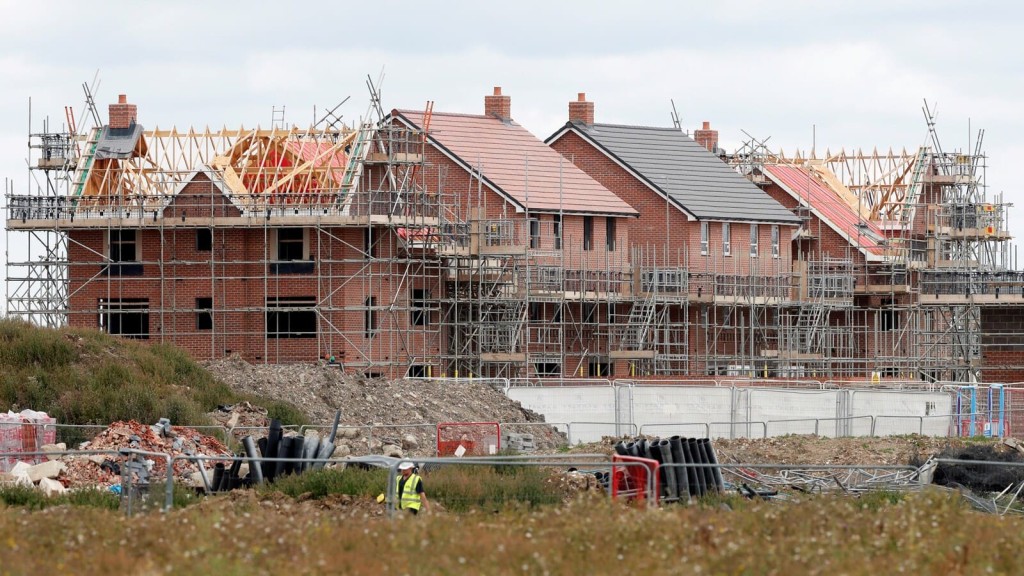
Since World War II, UK construction costs have been on a steady upward trajectory, driven by inflation, labour shortages, material costs, and changing government policies. While economic downturns have occasionally caused brief dips, the overall trend has been relentlessly upward.
Recent years have seen this trend intensify. Brexit threw a spanner in the works, disrupting supply chains and labour markets. Then came global supply chain chaos, adding fuel to the fire.
The result? A perfect storm of cost pressures.
The workforce challenge compounds these pressures. The Home Builders Federation's latest research, 'A Hard Hat to Fill', reveals a sector in crisis—240,000 additional skilled workers are needed to meet housing targets, including 20,000 bricklayers and 20,000 groundworkers.
Apprenticeship numbers tell a troubling story, with only 10% of required bricklaying and 3% of groundworking apprenticeships completed last year. With a quarter of the current workforce aged over 50, the industry faces an impending 'retirement cliff edge'.
This acute skills shortage creates a sellers' market for qualified tradespeople, driving labour costs to unsustainable heights and further intensifying the cost pressures facing the sector.
The training pipeline offers little relief—of the 100,000 students enrolled in further education construction courses, only 25% gain employment in the sector, with 60% abandoning construction entirely after completion. Across eight key trades, only 17% of the required apprentices were trained last year.
As if these workforce challenges weren't enough, the economic indicators tell an equally concerning story.
Furthermore, the Office for National Statistics (ONS) indicates in its October 2024 release that new residential construction projects continue to decline year-on-year. Although the rise in construction costs has slowed compared to the steep increases of previous years, it remains significantly high. This ongoing elevation above the Consumer Price Index (CPI) continues to exert pressure on the sector.
Looking ahead to 2025, there's little reason for optimism on the cost front. Inflation continues to bite, energy prices are through the roof, and material shortages persist. It's a triple whammy that's likely to keep construction costs stubbornly high.
This economic pressure intensifies the challenges faced by the UK housing market, which operates primarily on a 'speculative model'. In this approach, developers invest upfront in land and construction without guaranteed sales, exposing themselves to significant risk.
As costs rise unpredictably, housebuilders must strategically adjust their pricing to maintain their typical 15-20% operating profit margins, rather than absorbing the increased expenses. This delicate balance between rising costs and maintaining profits will likely drive new build house prices to record highs, significantly impacting housing affordability and reshaping market dynamics.
So what's being done to address these challenges?
Industry leaders are calling for decisive action: streamlined funding for SMEs to train apprentices, direct collaboration with homebuilders on tailored skills planning, and greater investment in further education to create a truly work-ready workforce. However, such measures would take years to yield significant results.
Although technological advancements and increased efficiency could potentially moderate costs in the long term, industry analysts predict that UK construction costs are unlikely to decrease in 2025. If you're considering a building project, it's worth noting that delaying in hopes of lower costs down the line may not be a wise strategy.

As a multidisciplinary architecture and planning firm, we have recently observed a notable increase in projects for bespoke homes in rural areas. Our clients have consistently cited the high sale prices and perceived low quality of new build homes offered by national housebuilders as the primary reasons for this shift.
This trend has led to a significant change in how people approach homeownership. We have had many clients who, disillusioned with the offerings from national housebuilders, have taken matters into their own hands. They've opted to buy a plot of land and build their own home, rather than settling for a cookie-cutter new build.
This approach to building bespoke countryside houses is now increasingly seen as a more attractive investment for many. It offers the allure of tailored designs, higher build standards, custom specifications, and desirable locations - all for a financial outlay that's often comparable to buying a new build from a major developer.
This trend has been particularly noticeable in relation to Paragraph 84 exception houses. These are homes that can be built in the countryside under special circumstances, as outlined in the National Planning Policy Framework, if they meet specific criteria, such as being of exceptional quality or innovative design.
This policy has opened up opportunities for those seeking to build unique, high-quality houses in scenic rural locations, providing an alternative to the often cookie-cutter offerings of large developers. Working with self-build house architects allows these ambitious individuals and families to fully realise their vision, creating custom homes in the Green Belt that not only meet the stringent criteria of Paragraph 84 but also perfectly align with their lifestyle and aesthetic preferences.
In some cases, these opportunities are emerging in what is increasingly referred to as the grey belt — land within the Green Belt that has limited strategic, environmental or visual value and could be more sustainably developed without undermining the Green Belt’s core purposes. For self-builders, these underutilised or previously developed plots may present a realistic and responsible route to creating bespoke homes in desirable countryside locations
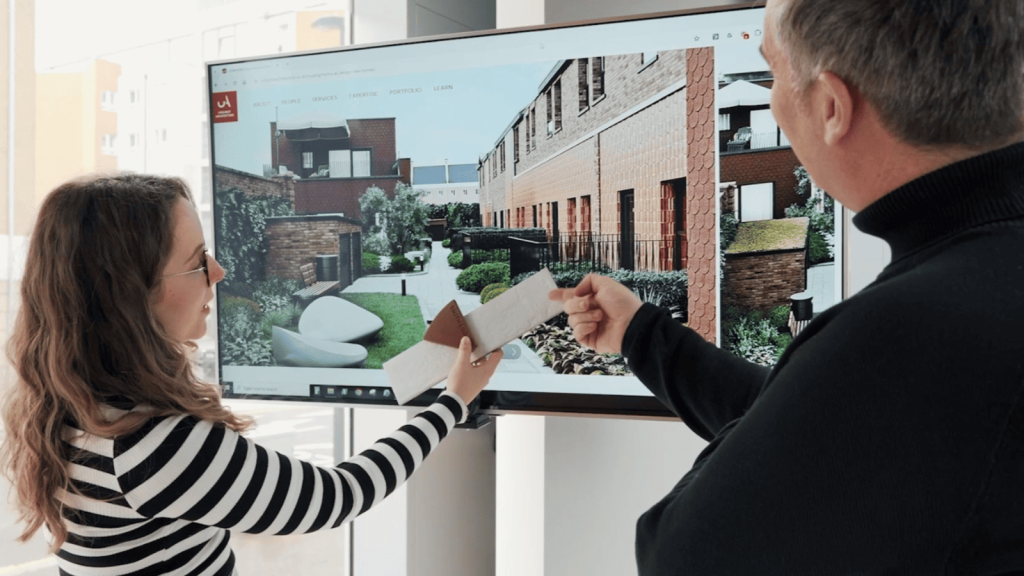
As this article has detailed, it’s a tough time to be a buyer or a homebuilder in the current landscape.
There are a number of factors contributing to the current housing debacle, including rising material costs, a lack of skilled construction workers, high land costs, restrictive planning processes, use of cheaper, lower-quality materials, outdated construction methods, poor quality control, limited competition among developers, developers prioritising profit over quality, seller’s market, rushed construction, and inadequate consumer protections.
While we listed the many contributing factors to the deflating state of things in today’s article, we also highlighted ideas of how to remedy these issues, which we hope provided you with some optimism about how things might look in the future.
If you’d like to discuss your project, don’t hesitate to get in touch with our friendly team.

Urbanist Architecture’s founder and managing director, Ufuk Bahar BA(Hons), MA, takes personal charge of our larger projects, focusing particularly on Green Belt developments, new-build flats and housing, and high-end full refurbishments.
We look forward to learning how we can help you. Simply fill in the form below and someone on our team will respond to you at the earliest opportunity.
The latest news, updates and expert views for ambitious, high-achieving and purpose-driven homeowners and property entrepreneurs.
The latest news, updates and expert views for ambitious, high-achieving and purpose-driven homeowners and property entrepreneurs.
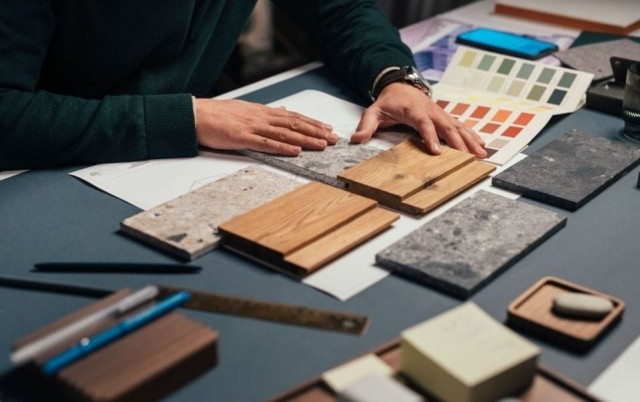
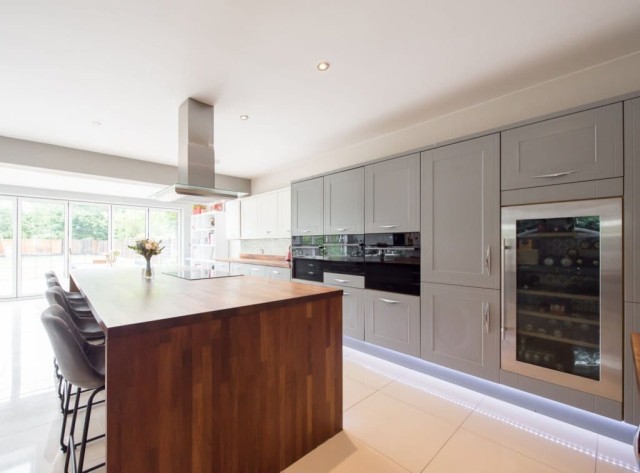
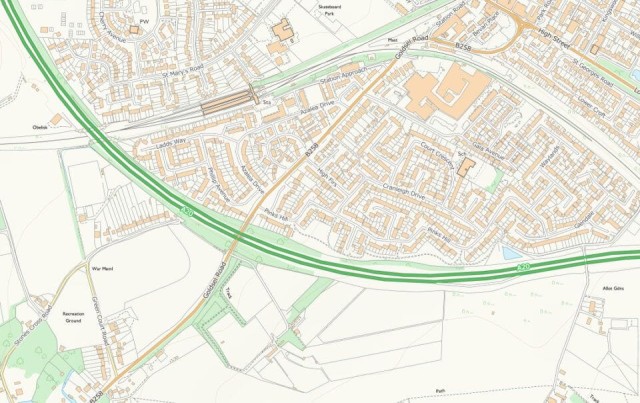
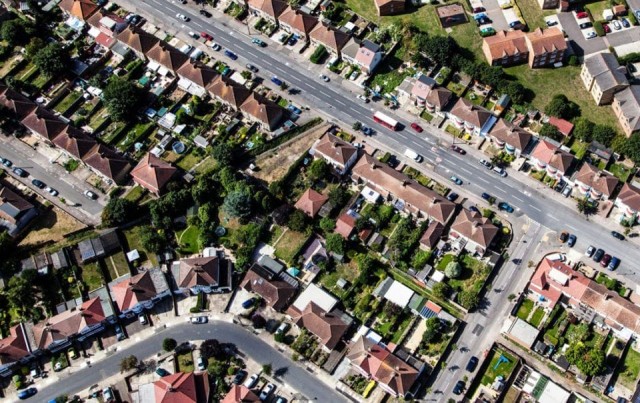
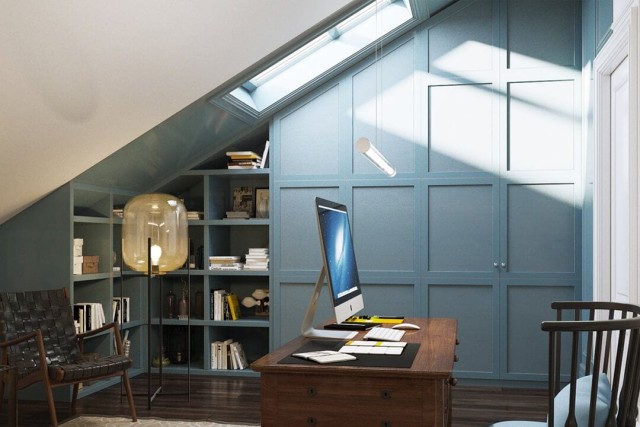

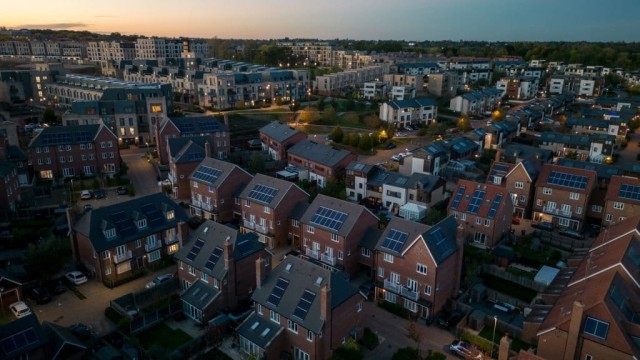


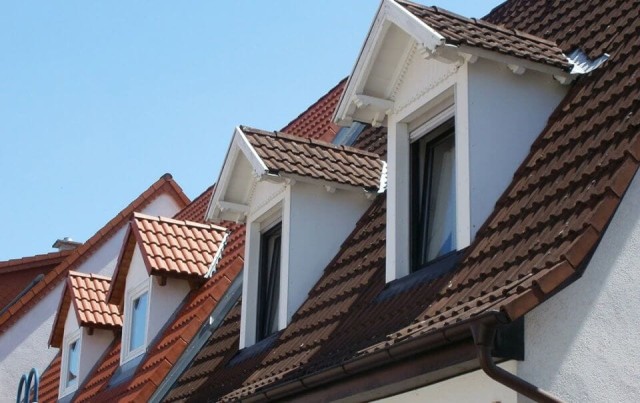
We specialise in crafting creative design and planning strategies to unlock the hidden potential of developments, secure planning permission and deliver imaginative projects on tricky sites
Write us a message